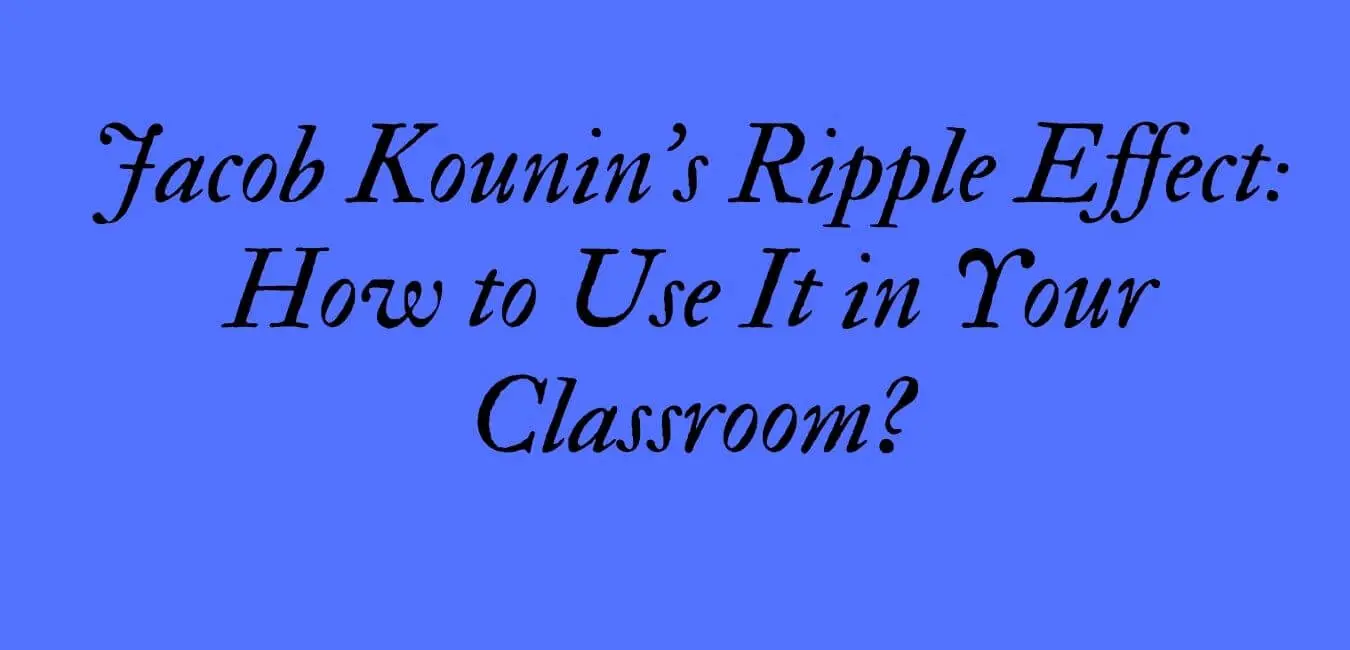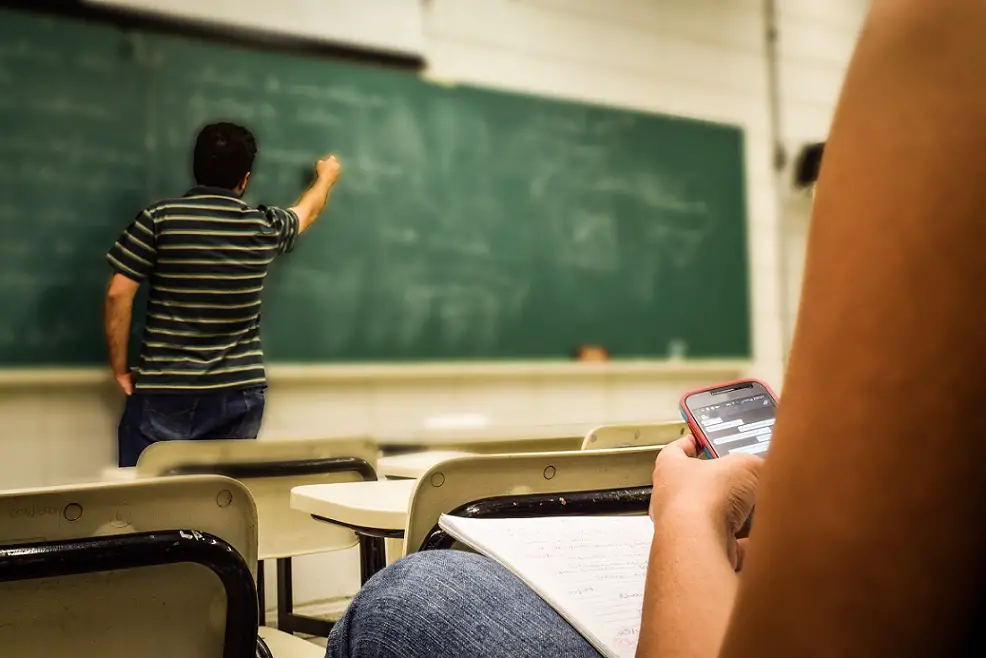Teachers often have a hard time disciplining students. This is because they may not know the best way to respond when a student misbehaves. The Dreikurs Logical Consequences Model can be used as an alternative to traditional discipline methods and has been found to be effective with all types of learners, from preschoolers up through high school students. Read on for more information about this model and how it works!
History Of Logical Consequences
Dr. Rudolf Dreikurs first published his method of logical consequences in 1964. Prior to the publication of Dr. Dreikur’s work, there were “consequences” that mainly involved punishments or rewards based on student behavior.
The Dreikurs Logical Consequences model is based on the belief that students will change their own behaviors when they experience reasonable, related, and respectful consequences for their actions. This method of discipline is meant to set limits and teach children how to behave appropriately. It is important to note that the consequences given out as a result of logical consequences are not meant to be punishments, but rather logical outcomes for certain behaviors.
The Four Basic Principles Of Human Nature:
Dreikurs believed that without understanding the needs, desires, and purposes for behaviors children (and adults) would continue to misbehave. Understanding these needs is one of the four principles in his contribution to psychology and education. These needs are shown below:
Everyone…..
1. ….wants to get along with others,
2. …..wants to be accepted and appreciated,
3. …..wants to feel important and capable within life, and
4. …..wants power (i.e., control) over his own life.
The Logical Consequences Model is based on the following assumptions:
1. The desired or undesirable effect should follow immediately after the behavior so that the student can see how their choices have consequences.
2. There must be a reason/logic for the consequence.
3. The consequence must be stated as a “fact” as opposed to an order, threat, or lecture. This is important so that students will accept it and take responsibility without feeling controlled by the teacher who has authority in school and at home.
4. The logical consequence should help the student learn to make better choices and solve problems.
5. Consequences must be related to the actions that warrant them.
6. The consequences of students’ actions must be respectful to the students.
In Dreikur’s model, teachers should:
1. Identify the misbehavior and its undesirable effect (always). For example: “Jumping on the bed makes the bed break.”
2. State a logical consequence for misbehavior (it should be explained why their behavior is the cause of the consequence). For example: “You get hurt when you jump on a bed that can’t hold your weight.”
3. Help them avoid situations where misbehavior may occur again. For example: “If you want to jump on a bed, then find a new one that can hold your weight.”
4. Let them experience the natural, logical result of their action. For example: “You are free to jump on a bed within reason.”
5. Teach students new behaviors that will be more effective in getting their needs met. For example: “If you want to jump on the bed, then do it safely and ask for help if you need it.”
6. Use positive reinforcement for making good choices.
This model is commonly used in early childhood settings, preschools, child care centers, and private homes.
Today Dreikurs’ work has evolved into the more psychologically based perspective of behavior analysis, but it remains an effective way to teach students new behaviors that will be effective in the future without punishing them.
Is Dreikurs’ Logical Consequences Model Effective for Behavior Management?
The logical consequences model is a psychological approach to behavior management that focuses on making the story of behaviors relevant and meaningful to students. This technique allows teachers to address problem behaviors while avoiding power struggles with students. It also helps empower children by increasing their responsibility for their actions and decisions.
This method allows for a more supportive, caring environment in the classroom where students feel accepted and respected, as opposed to a punitive environment that alienates students.
The following list highlights the ways that the logical consequences model can be effective for classroom management:
1. Empowering students with choice gives them a sense of control over their learning.
2. Children have a better rapport with adults who use positive communication techniques.
3. Students who struggle with self-regulation feel more secure and safe in a non-punitive environment.
4. The process of identifying the misbehavior, brainstorming logical consequences, and reinforcing behavior allow students to learn from their mistakes.
5. Logical consequences model works well for behavioral issues related to student emotions.
6. Students develop a sense of accountability for their actions if they are responsible for determining the consequences.
7. The opportunity to make choices teaches students about cause and effect, as well as alternative behaviors they can use instead of making poor choices.
8. Identifying behavioral expectations helps children know what is and is not acceptable.
9. Once expectations and rules are established, students will learn to respect the rules and the consequences of breaking them.
10. Logical consequences model allows teachers to make punishments meaningful for children instead of merely punitive.
11. It respects the child’s dignity and social rights.
12. Helps avoid conflicts in school and more serious issues such as suspensions.
13. It helps create a safe environment in the classroom which nurtures a positive relationship between students and teachers. These benefits ultimately create an environment that is structured, efficient, safe, and facilitates learning in a positive manner.
14. It combines education and behavior management so that students can learn how to behave and improve their social skills. For example, the children will be happier if they get along with each other and stop bullying or fighting.
How To Use Logical Consequences in the classroom?
A logical consequence is an action that naturally and automatically results from a behavior. It’s important to what you should not do as a teacher when implementing the logical consequences in the classroom. You should avoid punishing students, calling out their names, or making a big deal about it.
Logical consequences are a type of negative reinforcement that creates an environment where students feel safe to take responsibility for their actions.
Here are 20 guidelines for using logical consequences in your classroom:
By following these guidelines, you can ensure that everyone will have a safe environment to learn in.
1. Show some empathy when enforcing consequences.
2. Keep consequences short. If they are too harsh, extend the time.
3. Consistency is key. Everyone needs to learn the same behavior for it to be effective.
4. Avoid using natural consequences in a classroom setting whenever possible.
5. Make sure you have covered all of your bases before implementing logical consequences.
6. Remain calm and avoid raising your voice while enforcing consequences. These punishments should be short and reasonable. They shouldn’t affect the student’s success in the long term.
7. Ensure that all students are doing the same work to get logical consequences.
8. Give yourself some time before implementing a logical consequence to make sure you’ve read the situation correctly.
9. Teach students positive behaviors as well. Teach them how to correct their own mistakes so they can fix the consequences that follow certain actions. This is called extrinsic motivation and it works very well with logical consequences.
10. Allow your students time to think about what they’ve done by implementing a consequence immediately. Don’t wait for the next day to give them the same consequence.
11. When working with students that you feel are struggling with their emotions, try using redirection.
12. Avoid arguing when giving consequences. Stay firm and explain why certain actions will result in specific penalties.
13. Think about what your students need to learn in order to prevent similar behavior in the future. This is intrinsic motivation.
14. When you have a student that talks back or argues, simply give them a consequence and then move on to the lesson (gives specific behaviors and actions after each one).
15. Make sure students understand why their actions resulted in consequences. Be clear and concise with your explanations.
16. Give yourself a minute to think before giving a logical consequence. Make sure you have everything planned out.
17. Remain calm while giving consequences. Avoid raising your voice or arguing with them.
18. Ensure that all students are following the same rules with logical consequences.
19. Make sure you allow for student reflection after their negative behaviors.
20. If your goal is to teach responsibility, don’t use punishments; they can teach students to be manipulative.
If you follow these guidelines when using logical consequences in the classroom, students should learn responsibility for their own actions and also take responsibility for the actions of their peers. Remember to always be kind and understanding while using logical consequences in your classroom as a teacher.
Final Thoughts
If you find yourself struggling to keep a classroom under control, it may be time for logical consequences. Logical consequences are punishments that make sense given the situation and fit within your set of rules as a teacher. For example, if one student talks back or argues with another in class, they might have to do an extra assignment at home as a consequence. You can also use logical consequences by having students clean up after themselves when something spills on the floor instead of giving them detention—a punishment only some teachers would enforce anyway! Knowing what types of behaviors will result in which type of penalty is key for any educator who wants to avoid behavioral problems among his/her students.














